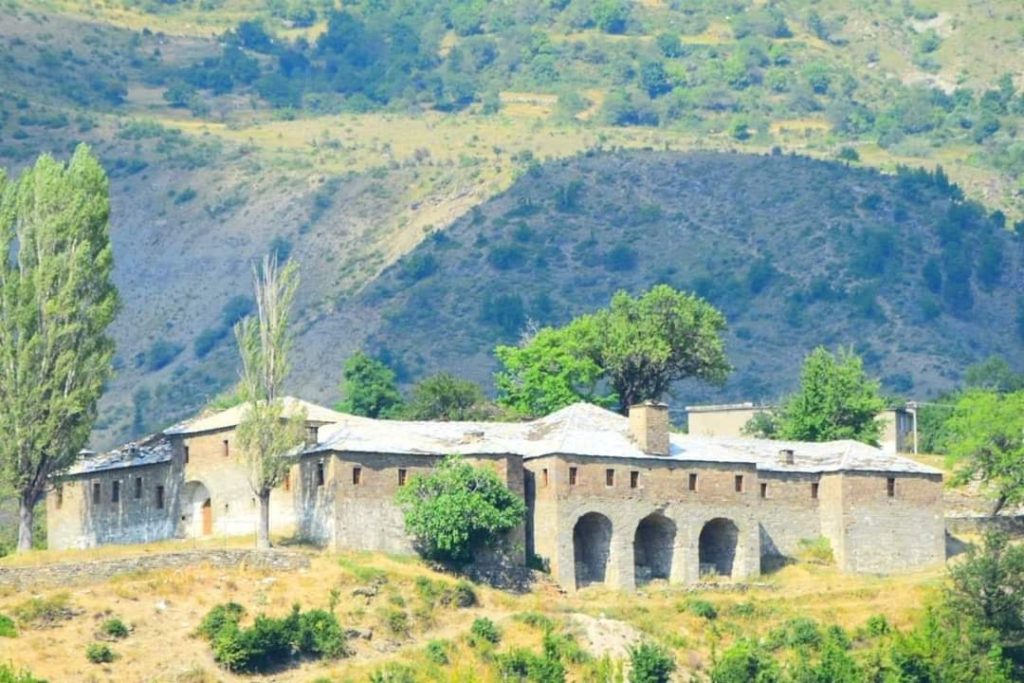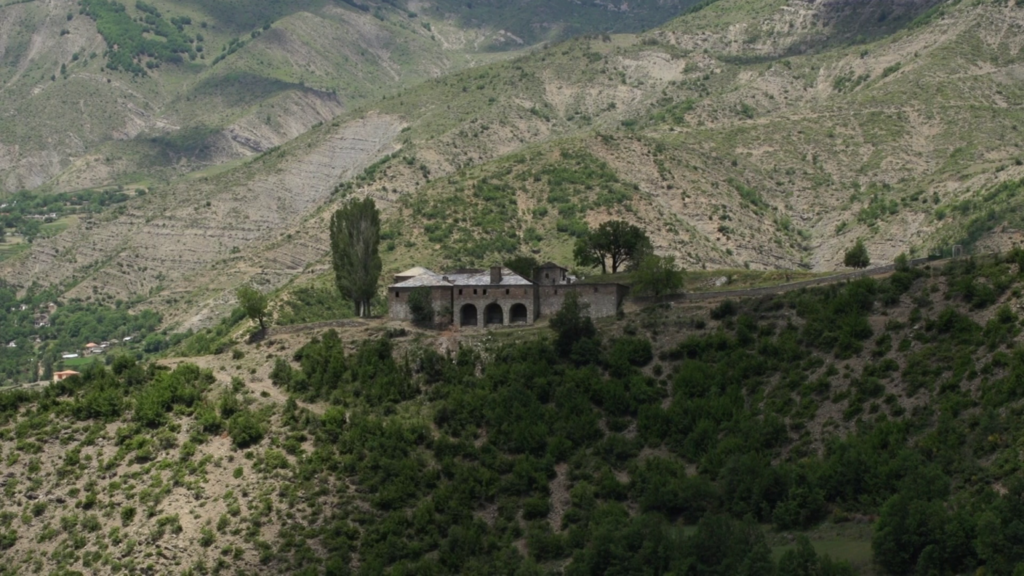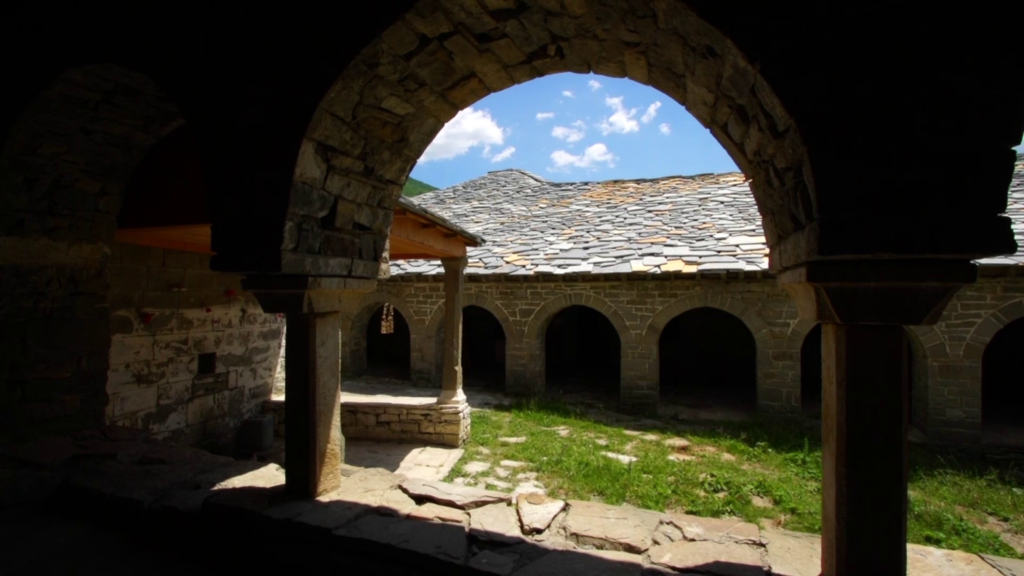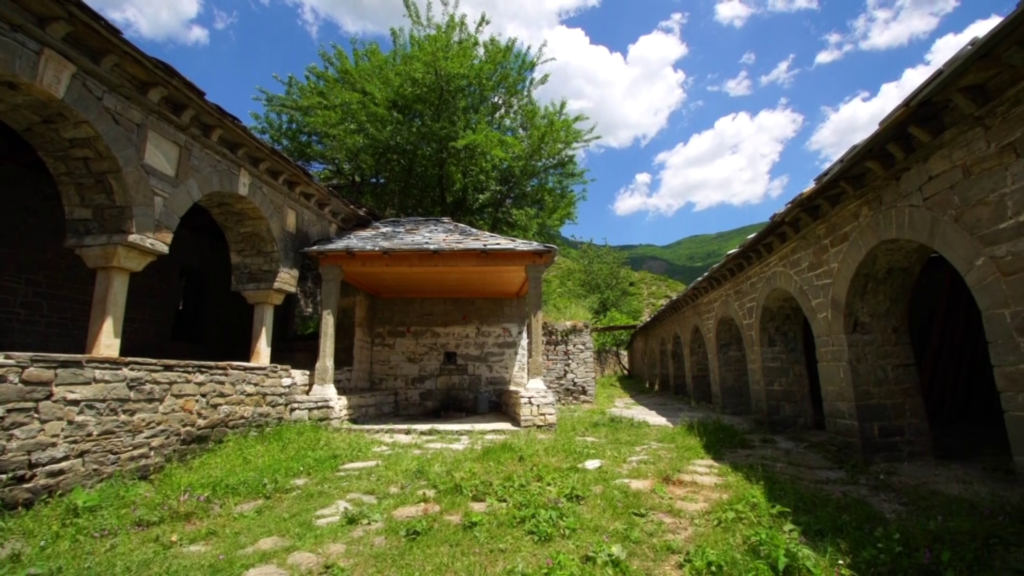
The Backa tekke is located southeast of Skrapar, in the village of Backa, on the border with Korça. Backë village, Potom Administrative Unit, Skrapar Municipality. The Ottoman inscription gives information that it was built in the years 1869 – 1870 by the heard father Fetahu. There is information that the old tekke, was before 1800, was a dervish Brahimi from the neighborhood of Koromanve of Backa. There are patriotic history and and patriotic activities, throughout the history of the national renaissance, until today. It was the hearth of the Albanian primer and language, of Naim’s books. Burned in 1914, Repaired in 1918.
The tekke is one of the interesting complexes, representative of the monumental architecture in Albania. Because, it combines all the crafts and constructive elements such as columns, arcades, domes and carved reliefs, with zoomorphic and floral figurative compositions, which we see in other tekkes and in the characteristic dwellings, early in Southern Albania. At the entrance of the gate on the left wing, the specialists, commissioned by father Fetahu, have carved the double-headed eagle.
The following clergymen served: dervishes Brahim Koromani, father Fetahu, dervish Veli Pajaziti from the Ermenji of Tomorrica, (1869-1902), father Mestani 1926. In 1940 the following clergymen served in this tekke: father Sali Kajmak, dervish Veli Agush, dervish Demir Or dervish Rexhep Adem, dervish Feim Adem, dervish Bedri Hebip.
In 1955, father Muço Panariti, dervish Hasan Hysi. Then continued father Ahmet Prishta, in 1961 dervish Hajrua. Other clergy followed, father Neshat Koromani 1963-1967.
It was closed as a religious institution in 1967, by the monist state. It reopened in 1998. A good part of the tekke was neglected. The Ibro brothers helped rebuild some of the rooms. Then, under the care of The Quarter of Skrapar, a complete reconstruction was done, reviving this rare monument, not only in Albania but also in the Balkans, in 2019. Also, in June 2020, a bronze bust was placed , father Fetahu bust. An annual pilgrimage is organized. Promulgated by the Ministry of Education and Culture with Decision no. 1886, dt. 10. 06. 1973, Cultural Monument.




